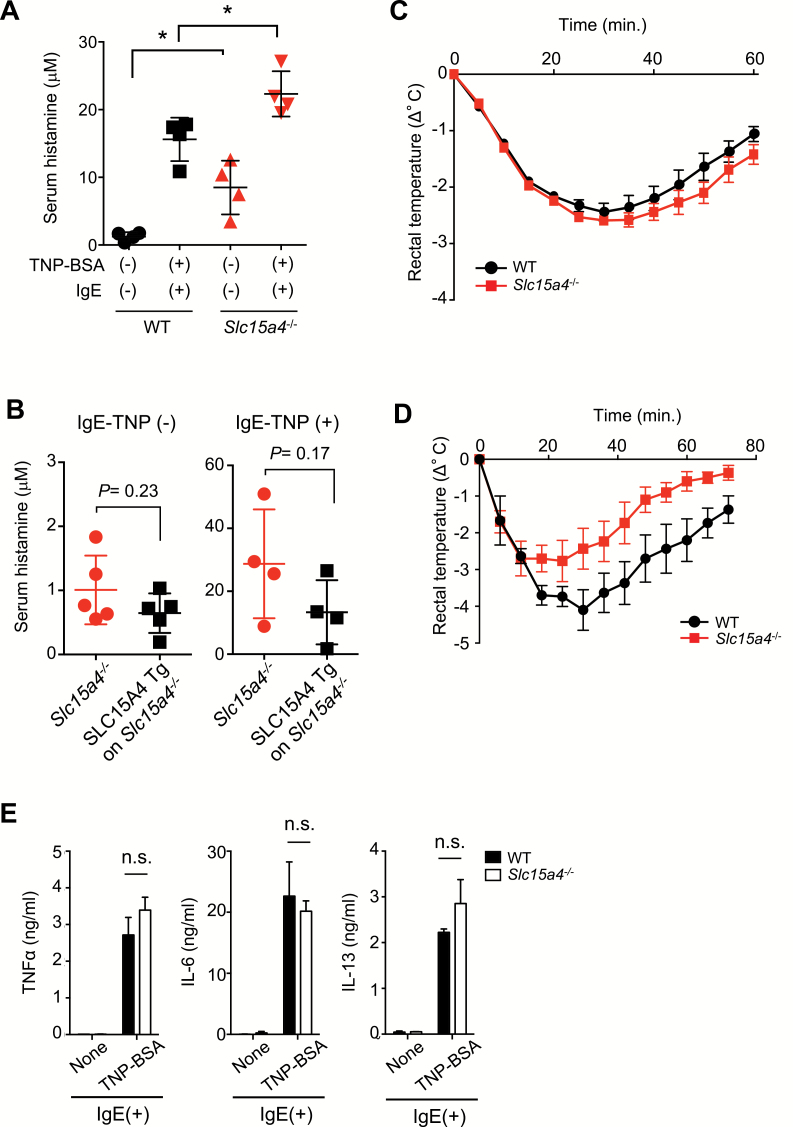Fig. 2.
SLC15A4 regulates histamine release in vivo. (A) Serum histamine levels during passive systemic anaphylaxis (PSA). WT (n = 4) or Slc15a4−/− (n = 4) mice were sensitized with anti-TNP IgE and challenged with TNP4-BSA. Serum histamine levels 90 s after antigen challenge were determined by EIA. *P < 0.05. (B) Reversed histamine levels in mice expressing human SLC15A4. Serum histamine levels in the steady state or during PSA in transgenic Slc15a4−/− mice expressing human SLC15A4 and in control mice [n = 5 each for IgE-TNP (−), n = 4 each for IgE-TNP (+)] determined by histamine EIA. (C) Body-temperature changes during PSA. WT or Slc15a4−/− mice sensitized with anti-TNP IgE were challenged with TNP4-BSA, and rectal temperature was monitored over 60 min (n = 5 for WT, n = 4 for Slc15a4−/−). Results are representative of three independent experiments. (D) Body temperatures were monitored over 60 min during histamine-induced anaphylaxis in WT and Slc15a4−/− mice. Dots and error bars represent the mean and SE (n = 3 for both WT and Slc15a4−/−, respectively). Results are representative of three independent experiments. (E) BMMC production of pro-inflammatory cytokines during IgE-mediated FcεRI ligation. WT or Slc15a4−/− BMMCs were stimulated for 6 h and cytokine levels in the culture supernatant were determined by ELISA (in technical triplicate). Results are representative of three independent experiments. n.s., not significant.

